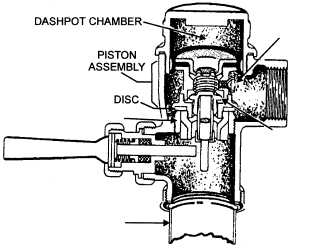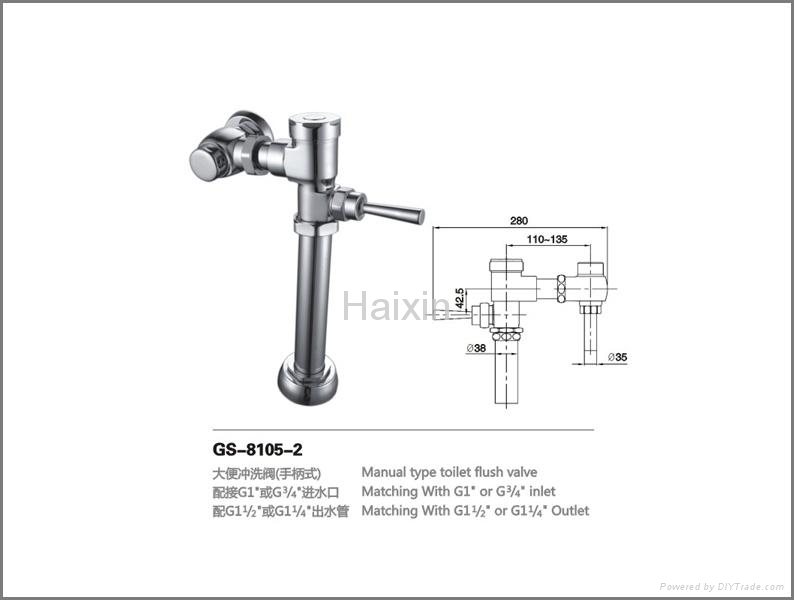Flushometer Valve
This system utilizes mains water pressure to pre-pressurize a plastic tank located inside what otherwise appears to be the more typical ceramic flush tank. A flush cycle begins each time a user flushes the bowl. After a user flushes and the water in the pre-pressurized tank has finished emptying into the bowl, the outlet valve in the plastic tank shuts. Then the high pressure water from the city main refills the plastic tank. Inside the tank is an air-filled balloon-like rubber diaphragm. As the higher-pressure mains water enters the tank, the rubber diaphragm is also pressurized and shrinks accordingly. During flushing, the compressed air inside the diaphragm pushes the water into the bowl at a flow rate which is significantly higher than a tank style gravity-flow toilet. This system requires slightly less water than a gravity-flow toilet- or alternatively can be more effective for a similar amount of water. Pressure-assist toilets are sometimes found in both private (single, multiple and lodging) bathrooms as well as light commercial installations (such as offices). They seldom clog, but the pressurized tanks require replacement about once every 10 years. They also tend to be noisier - a concern for residential settings. The inner bowl stays cleaner (in appearance) than gravity counterparts because of the larger water surface area and the toilet's forceful flush. Newer toilets from several companies such as Kohler that are pressure-assisted use 1.4 US gallons (5.3 l) to 1.1 US gallons (4.2 l) per flush.








No comments:
Post a Comment